Create Powerful Sales Success Stories that Motivate and Inspire Your Reps
Ryan Pimlott
on
December 5, 2016
Running a four-minute mile was once an elusive dream, but in 1954 Roger Bannister achieved the impossible. Fast-forward 60 years and the 4-minute mile is a rite of passage for professional runners aspiring to beat Hicham El Guerrouj, who currently holds the world record with a time of 3:43:13, set in 1999.
For athletes, success is a powerful motivator. Once they know one person has achieved the impossible it inspires others to not only follow in their footsteps but smash their record. And it’s no different for salespeople. After all, they’re a competitive bunch, which is why sales success stories are a powerful motivational tool for sales reps.
What is a sales success story?
A sales success story is designed for the purpose of internal communication where a sales rep talks about how they navigated the buying process and closed a sale with a customer. They provide insights into how the rep achieved success, and can give their peers ideas about how they could apply the winning techniques. Success stories may also provide insights into how customers use your product (or solution) and the value it adds to their business, providing more information that can be applied in sales conversations.
However, like any sales enablement tools, they’re only effective if the content is useful and if it’s delivered to your reps in a way that they can consume easily. That’s why it’s important to enable your reps with sales success stories that have been well researched and delivered. In this post we’ll take you through how to create sales success stories that will help your reps sell more.
Why are sales success stories important and how are they used?
Sales success stories are an important element of peer-to-peer learning. They are internal tools that can be used to train new hires on how deals have been won, and inspire and educate seasoned reps. They can be used as training tools, where reps learn how their peers have successfully sold to similar customers, different verticals, or beat the competition. The success stories may also provide anecdotal evidence of how your product is used and its success. Reps can use this knowledge in customer conversations to explain the value your product can provide to a prospect.
How do you create a sales success story?
Sales success stories can be created in several different formats, depending on what is most useful for your audience. For sales reps, I’ve found it best to deliver them as short but powerful snippets of information that are delivered direct to their mobile device and / or inside CRM system. Some of the formats that I’ve seen used include:
- A 3 to 10 minute video of the rep explaining their story;
- Written collateral like a case study that’s available for reps to read in their downtime;
- A few PowerPoint slides that have dot points with the relevant information; and
- Audio or podcasts that can be listened to while reps are traveling.
By making the information short and punchy it’s easier for reps to consume while they’re on the go. One of the most effective ways to do this is by creating a standard structure for your customer success stories. This structure guides how you collect the information, all the way through to how it’s presented to your reps. I suggest following this four point structure: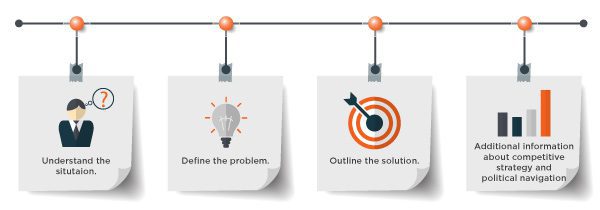
Some other ways that you can make your success stories easier for your reps to access and digest include:
- Make them searchable, particularly if they’re longer case studies. This will help your reps find them quickly when they’re preparing for a meeting
- Make them available on their mobile device. Many field sales reps use their cell phone or tablet as a pseudo office nowadays, so it’s imperative that they can access success stories on them
- Make them available on your CRM system like Salesforce.com
- Make them available offline. This will enable your reps to go through them when they’re on a plane or find them even if they don’t have Internet access, and
- Keep it simple. While there’s a lot of information that you may want to convey, keep it short or use bullet points so it’s easier to skim through. And follow a standard structure as suggested so that reps know where to find what they’re looking for.
Collecting the information for your success story
It’s always best to go straight to the source when collecting information, that’s why I suggest interviewing your sales rep directly for your success story. If your customer is open to it you can also ask them to be included in the interview process. That way you can obtain their perspective on the sales process as well. And because the interview will only be used for internal purposes, I’ve found that most reps (and customers) are much more open and candid about their experiences.
If you’re not familiar with interviewing people it can be a bit daunting. To help you get the most from your sales rep (and possibly customer) interviews, I’ve suggested below some questions that you can use in your interviews. The list is not intended to be exhaustive, but rather it’s intended to be guided to help you through the process. So you can pick and choose which questions to ask in your interview based on the situation and how the interview is going.
Once you have collected your information it’s just a matter of editing your video or audio or writing up your success story and publishing it on your sales enablement tool or content management system.
Understand the situation
- An overview of your customer’s business
- Please give me a quick overview of your customer’s business?
- What does it do and how long has it been in operation?
- How many employees are there?
- What are its revenues?
- Your champion’s role within their business
- Can you please describe their role
- Where does their role sit in the broader org structure?
- Your customer’s customers
- Who are their target customers?
- How do they use their product?
- Your competitors
- What other solutions was the customer looking at?
- How did you find out about your competitors?
- Political navigation
- Was there any saboteur in the deal? How did you overcome them?
Define the problem
- The pain points and challenges your customer faced
- What were the key challenges that your customer’s business was facing prior to using our product?
- Were there specific pain points in their process that they wanted to remove?
- What were they doing before to solve for these issues?
- Did they use other tools or processes? How did they work?
- The impact on your customer’s business
- How did these challenges impact their business? Higher costs? Productivity? Revenue?
- The decision-making process
- What were other people involved in the decision making process?
- How did you navigate the internal politics of the customer’s decision making process?
- How did you identify your sales champion within the customer’s business?
- How did the champion help you get the deal over the line?
Outline the solution
- How you helped your customer solve for their pain points and challenges
- Explain how you went about identifying your customer’s pain points or the challenges they were facing
- How did you address these challenges in your customer conversations?
- How did you help them resolve these challenges?
- Who else helped you resolve the challenges?
- Did they need to make any changes to their business to resolve these challenges? How were these received by their sales teams? Other internal teams? Their executives?
- What support did you receive from other departments in their business?
- What objections did you encounter from other departments in their business? How did you overcome this?
- Did you encounter any other challenges or objections in the sales process? What were they? How did you resolve them?
- How your customer uses our product
- How is your customer currently using our product?
- What features do they find helpful?
- How does our product help alleviate their pain points or solve their challenges [describe what these challenges were]?
- How does our product help them achieve their goals?
- Has your customer reduced costs as a result? How do they quantify this?
- Has your customer improved productivity as a result? How do they quantify this?
- Has your customer increased revenue or sales growth as a result? How do they quantify this?
- Has our product helped you and your team achieve success in your goals? How?
Additional Information
- Do you have anything interesting about this sales or the sales process that you would like to share?
Improve Your Sales Rep Productivity!
Ready to see what Mindtickle can do for your sales teams?
Get a Demo

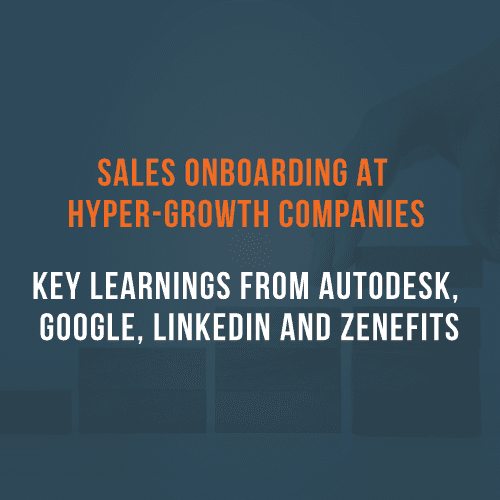 Last week I attended the
Last week I attended the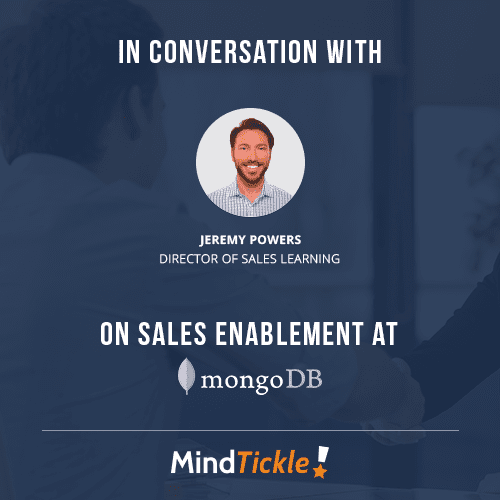 This post is based on a podcast on MongoDB’s formula for
This post is based on a podcast on MongoDB’s formula for 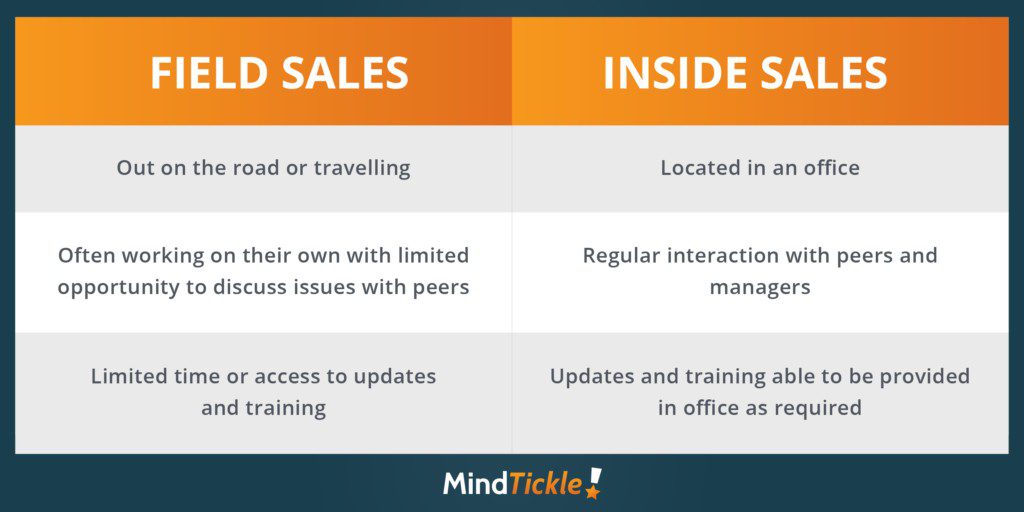
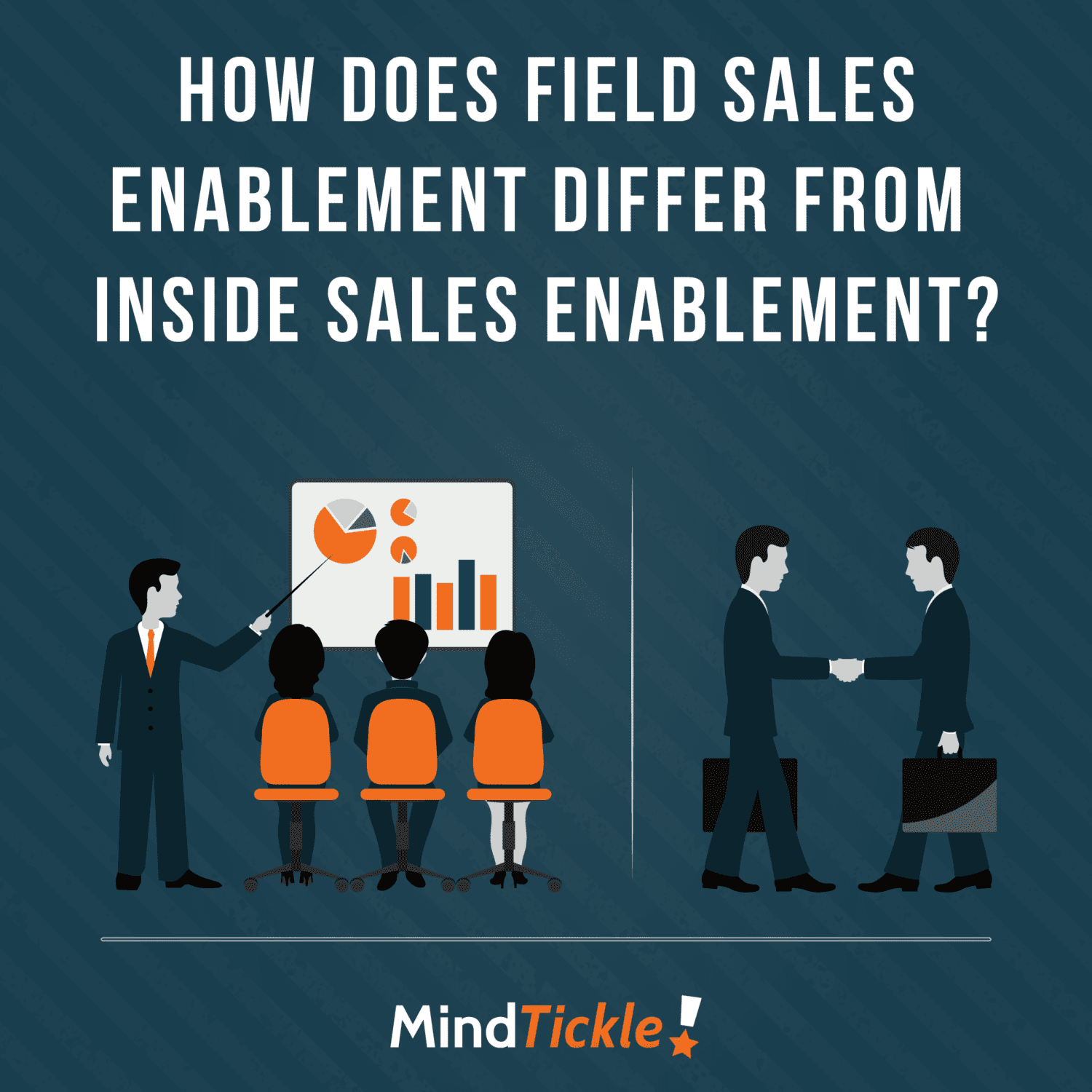 Knowledge baselining and message calibration
Knowledge baselining and message calibration

